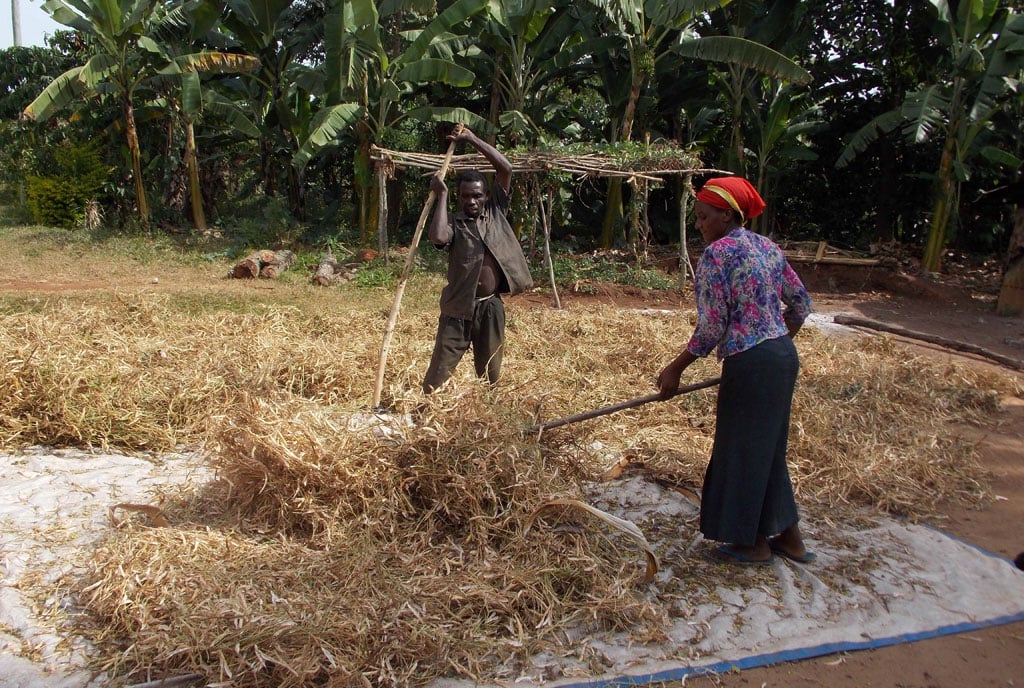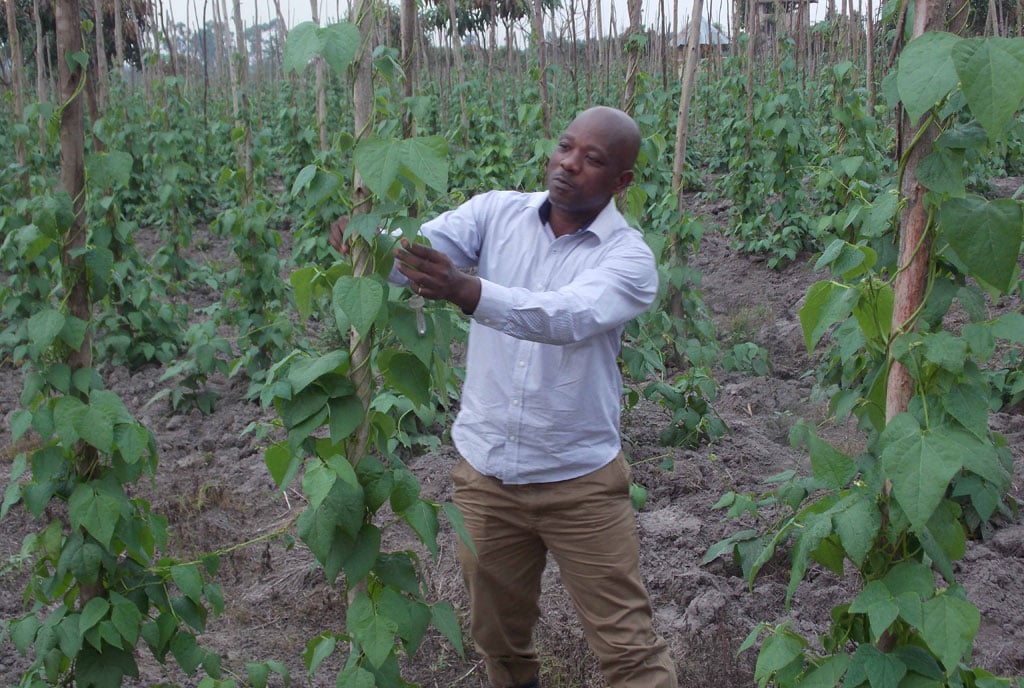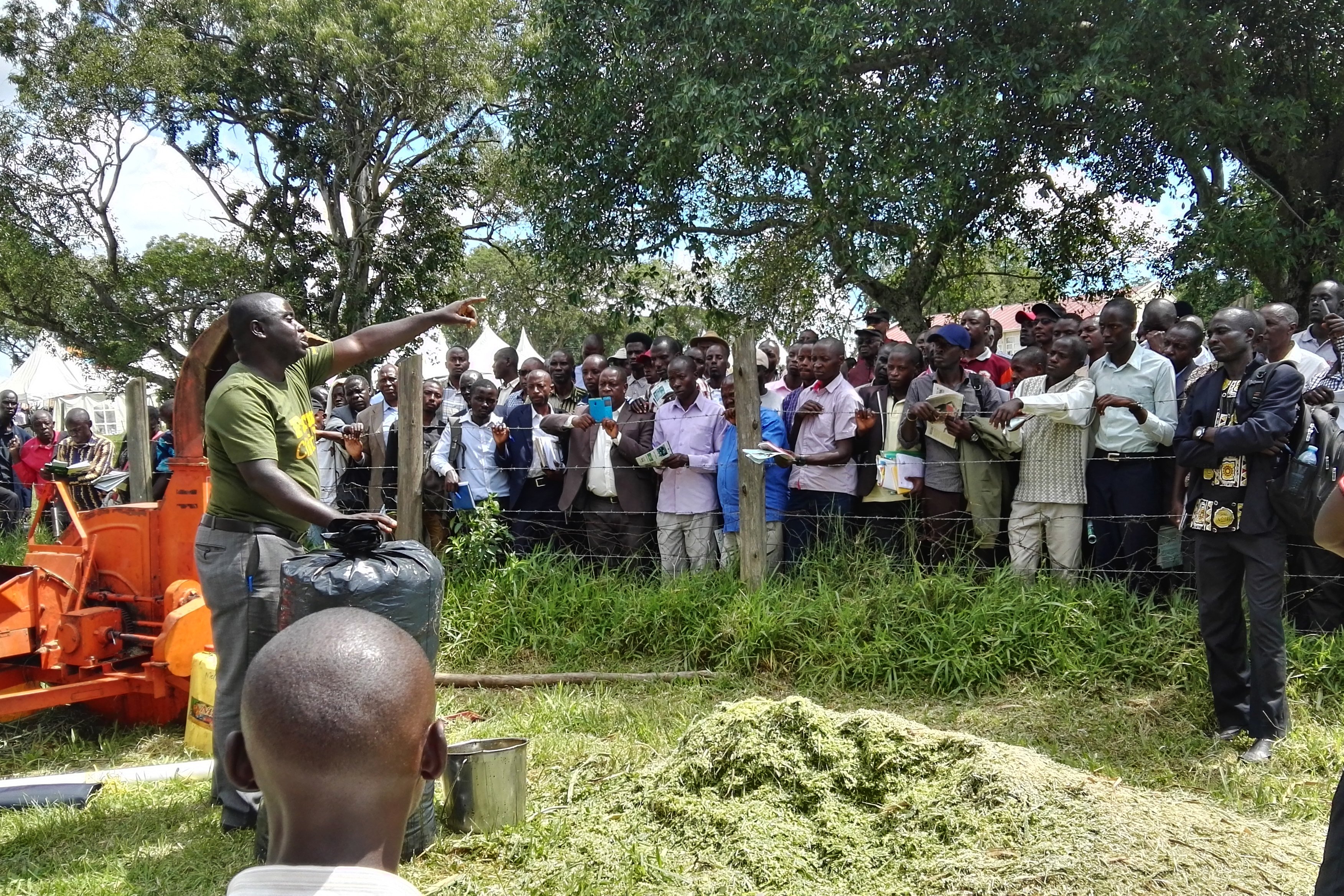Prime
What to remember in the bean harvesting season

Farmers thrashing their beans in Uganda. PHOTO/MICHAEL J SSALI
What you need to know:
- Good storage practices help the farmer to preserve his crop for a long time.
- It is common for the farmers to worry about low prices for their crops soon after harvest, writes Michael J. Ssali.
All bean producers have to bear in mind during the ongoing bean harvesting season that they are food handlers and that beans are human food as well as a source of income for many different actors across the bean value chain --- traders, processors, vendors, restaurant operators, and consumers.
It is therefore expected that the beans will be very carefully handled to ensure that they are of good quality and safe for human consumption. Good quality products are often sold at high prices and for farmers to earn big profits they ought to ensure that the beans they produce are of good quality.
Most bean farmers across the country have had a lot of challenges in the last few months due to the heavy rains that have curtailed proper growing of beans and even caused flooding and submersion of many fields.
Best practices
Charles Katabalwa, managing director of SAWA Agricultural Development Company Limited, Mpigi District says, “Too much rain prevents good seed development in the bean pods. It also causes abortion of flowers and in many cases the beans are quite small. In other cases the space which should be occupied by seeds is just filled with water. Usually too much rain makes the bean leaves very big yet the bean seed size reduces. So the beans harvested this season are likely to be smaller because of too much rain. And this has nothing to do with the variety of beans that the farmer planted. The problem cuts across all types of varieties, whether they were bred to be high yielding or not.”
Extra care
He goes on to warn the farmers that they must be extra careful during this harvesting season which is happening when the weather is very tricky. “The beans should not take too long in the field after maturity,” he says.
“When they take too long the pods open and the bean seeds drop to the ground and get lost to the farmer. It is better to uproot the beans as soon as they show signs of drying, like when they turn yellow and begin dropping leaves. They should then be sun dried on a flat, cemented, floor or on a mat or tarpaulin. These days the rains are quite unpredictable and there must be someone all the time to cover them up or to remove them from the yard whenever it is about to rain.”
When to harvest
Katabalwa further says it is not right to uproot dry beans under the hot sun as the heat will make the pods brittle and to open on their own, spilling the bean seeds, and leading to harvest loss.
He goes on to say that the threshing should take place when the beans are dry.
“If they are wet or too dry they will be easily damaged which is not good. Bean traders prefer to buy good looking beans.” He recommends tying bundles of dry beans on ropes and hanging them up inside buildings as one of the preservation measures before threshing.

A bean farmer in Rakai District examines his crop as the rain season lasts. PHOTO/MICHEAL J SSALI
Katabalwa, who is a trained agriculturist, says it is always better to dry the harvested beans when they are still in the pods than threshing them before ensuring that they are really dry.
He says they should be dried for some three days under the sun. However, in the wet season such as we are all going through the farmer may extend the number of drying days since we tend to have more rain than sunshine.
Bumper harvest
Joseph Asiimwe, business coordinator at Kyazanga Farmers’ Cooperative Society, however, says that despite the heavy rains his farmers are enjoying good bean harvests.
He says, “The farmers who weeded their gardens in good time are happy with the yields. The only challenge they have now is where to dry them because it rains every day.” The farmers under Kyazanga Farmers’ Cooperative Society work closely with Naro to produce quality bean seeds for sale to farmers in different parts of Uganda.
Protection
When the beans are put under the sun to dry they must be protected from livestock such as cows, goats, or chicken walking over them. Their droppings will give the beans foreign smells. According to a toolkit published by Naro, during threshing the farmer should take care not to break and damage the beans. He or she must never mix the beans with dirt and rubbish. Nobody will pay highly for dirty beans. Farmers must not thresh beans on the bare ground or in a gunny bag as grains will easily be damaged – broken or cracked grain is more likely to be attacked by insects and mold.
Recommendation
Naro recommends that threshed beans must be dried again and protected from rain insects, animals and dirt. It recommends drying the beans on clean mats or wire mesh trays and spreading the beans thinly on the drying surface to allow air to pass freely. The grain should be turned regularly to avoid overheating. The recommended rate of drying is up to three sunny days. Winnow the beans to remove chaff, dust, and other rubbish. Remove shriveled, diseased, broken beans and beans of other varieties by sorting.
Advice
Katabalwa has good advice for farmers about storage of harvested and threshed beans. His recommended level of dryness for stored beans is 12-13 percent. He advises farmers to purchase Pics bags for storing the beans. The idea is to deny pests oxygen to breathe. If Pics bags are tightly closed no pests can survive. Any airtight containers like plastic drums that can be tightly covered may be used to store dry beans. Katabalwa also advises putting dry tobacco leaves, dry cypress branches over the bags of beans as a precaution.
Storage
During storage all bags should not be placed on the cement floor as the beans could absorb some moisture and get spoiled. All bags should also be some three feet away from the walls to avoid whatever chance of moisture absorption. He goes on to say that the farmer must ensure that the roof does not leak. The store must be well ventilated. Rats must be prevented from gaining access to the store by laying rat traps. All dead rats must be immediately removed and burnt.
Katabalwa also says all the bushes near the store must be cleared to reduce chances of rats gaining entrance into the store. He also speaks about farmers regularly consulting their area agricultural officers about how to use pesticides to prevent pests from damaging the beans. “This is very important because if farmers are not guided about safe usage of agricultural chemicals the beans can be unsafe and unfit for human consumption.”

A hen walking over beans spread out for drying in the yard can drop excreta, introduce bad smells and lead to crop loss. PHOTO/MICHAEL J SSALI
Good storage practices help the farmer to preserve his crop for a long time. It is common for the farmers to worry about low prices for their crops soon after harvest. This is normally caused by the availability of the commodity in large amounts in nearly all farming households. Effective storage practices make it possible for the farmer to preserve the crop until the demand for it increases, enabling farmers to earn more. Good storage is also important for food security.
Advice
Katabalwa has good advice for farmers about storage of harvested and threshed beans. His recommended level of dryness for stored beans is 12-13 percent.
He advises farmers to purchase Pics bags for storing the beans. The idea is to deny pests oxygen to breathe.




